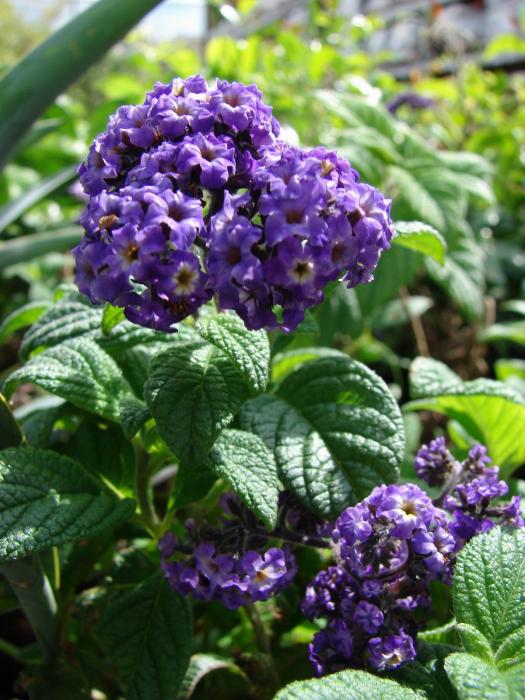Seeking Fragrance for Summer
By Ray Novitske, Fairfax Master Gardener
When starting out on this story, my first attempt was to identify the fragrant flowers you can grow at home. When consulting possible candidates, I found consensus in the same favorites showing up. These are the plants you already know and love. Rose, lilac, hyacinth, peony and lavender were at the top of everyone’s list. Jasmine and gardenia were also on many lists, but I would consider them as houseplants that spend the summers outdoors in our climate.
Lilacs and peonies bloom for a quick time and then they are gone until next year. You will not likely get any peony blooms on plants this year if purchased now unless you pay a fortune for a mature plant. Lilacs are shrubs that may take a few years to establish themselves before you can enjoy their sweet fragrance. Hyacinths are spring bulbs already finished for the year. Fragrant roses bloom now, and then trail off for the remaining summer, sporadically pushing out something if they are in the everblooming mood. Of course, the knockout roses will keep going somewhat with little fragrance. My story then took on a new purpose: to help you identify some fragrant plants that you can plant in your garden now that will bloom this summer and be used as cut flowers.

Tuberose
Tuberose
First on the list is Polianthes tuberosa or tuberose. This is an old plant that has been around for centuries and cultivated by pre-Columbian civilizations and the Aztecs in Central and South America. The Spanish conquerors took it with them when returning to Spain in the 16th century. It has been in cultivation so long that it is no longer found in the wild and is considered a ‘cultigen.’
Tuberose is an old fashioned Victorian and early 20th century favorite that is no longer in fashion. It is a plant grown from rhizomes and is a member of the agave family. Its grass-like leaves will give way to flower stalks in mid to late summer and will shoot up and produce clusters of white, waxy, funnel-shaped flowers. The tubular shaped flowers are intensely fragrant and have been used as an ingredient in perfumes.
The plant loves hot areas and appreciates hot afternoon sun. It grows well in well-drained garden soil and is considered a perennial in Zones 9 and 10. In our Zone 7 climate, it is best to dig up the tubers and store them over winter like gladiolus and dahlias.

Heliotropium arborescens
Heliotrope
Heliotropium arborescens is also called the cherry pie flower because of its sweet scent. The good news for Fairfax County is that this plant flourishes in hot, dry summers, is drought and heat tolerant and are hated by deer. The tiny 1/4 inch flowers bloom in dense clusters of pink, white and lavender in addition to the deep purple your grandmother might have grown. Again, this is a plant that has been around for a time and just lost favor.
This is considered a tender perennial here but grows as a small shrub in other areas. It can overwinter in our area, but it is best to bring it inside if growing in a container or take cuttings for the following year. Yes, it does well in containers. Heliotrope needs at least six hours of sunlight to do well, preferring morning sunlight, and will reward you with sweet fragrant blossoms in mid to late summer. One note of caution: all parts of the plant are considered poisonous to humans and animals, although people will generally not die from its ingestion.
It readily blooms in the height of summer and can be cut and brought indoors to enjoy its sweet vanilla perfume.

Freesia
Freesia
The spicy fragrance of freesia can be enjoyed year round since it is excellent for forcing indoors during winter. When planted indoors in November, you can expect blooms in cold wintery January and February.
The South African native prefers rich soil and regular watering so do not let freesia dry out. They are considered a spring blooming perennial in warmer Zones 9 and 10, but here in Zone 7 they must be dug up in the fall and stored during winter indoors. They come in almost all color combinations. Most forms you will find for sale are hybrids giving you bigger and more numerous blooms than the native.
So, if you are considering something to plant and enjoy this summer, don’t overlook these fragrant, old fashioned beauties that can excite your olfactory senses, too.
References
• Heliotropium arborescens, North Carolina Extension Gardener Plant Toolbox
• Heliotropium arborescens, Make Mine Vanilla!, Dawn Pettinelli, University of Connecticut Home &
Garden Education Center
• Plant of the Week: Tuberose, Gerald Klingaman, University of Arkansas, Division of Agriculture,
Research and Extension
• Tuberoses: Fragrant Garden Antiques, William C. Welch, Texas A&M Extension
• Freesia—Freesia x hybrida Family Iridaceae, University of California, Statewide IPM Program
• Freesia x hybrida, Leonard Perry, University of Vermont